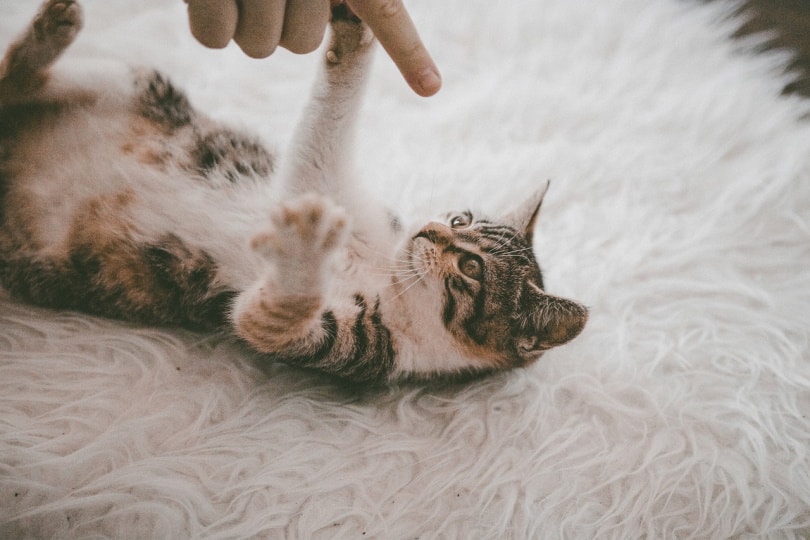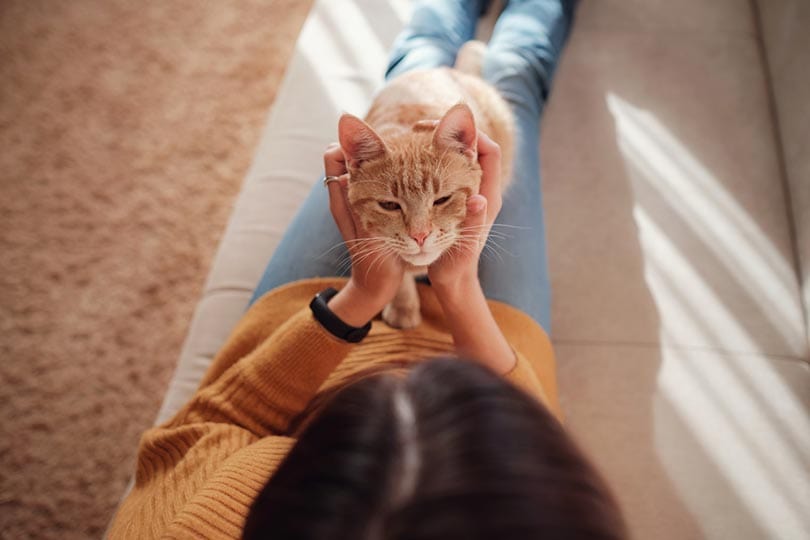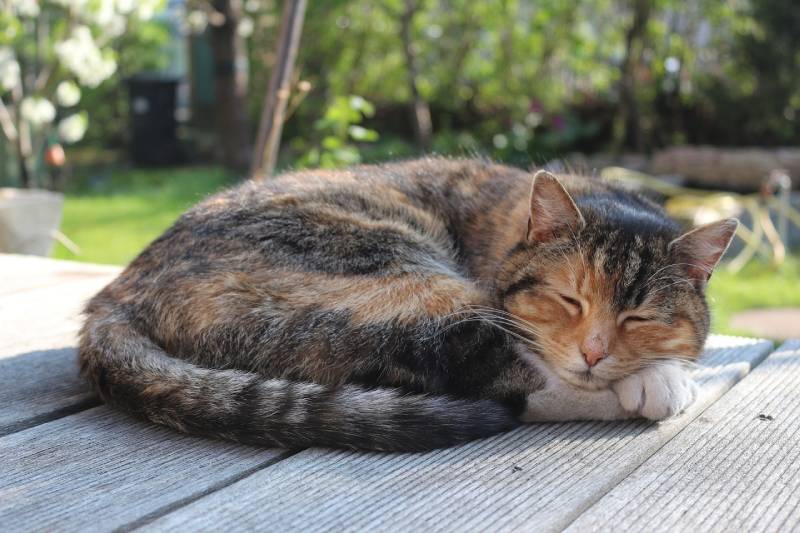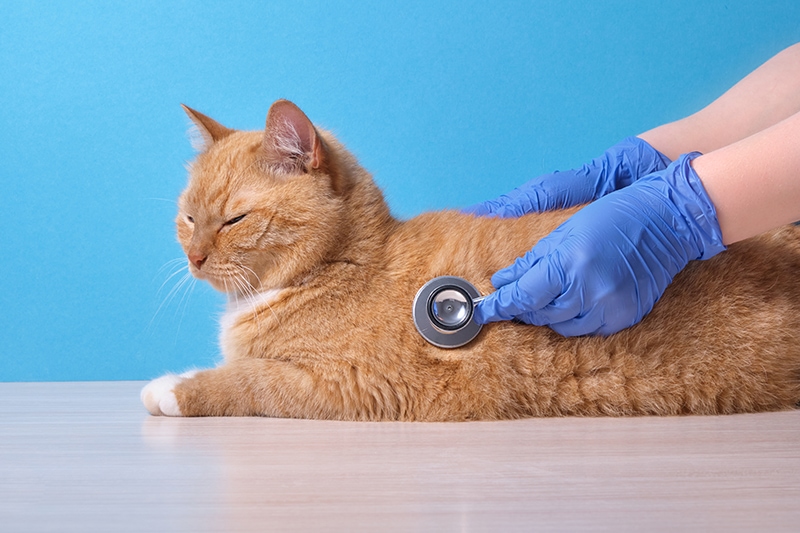Cats have smaller our bodies than we do, so it’s solely pure that they’d have quicker coronary heart charges. The conventional resting coronary heart charge for a cat is between 160–220 beats per minute. Latest bodily exercise will affect a cat’s coronary heart charge, so cats which have been exercising or energetic can have a quicker coronary heart charge for a short time. Medical circumstances can even have an effect on coronary heart charge in each instructions and cats which are in ache will usually have a quicker coronary heart charge than normal. Understanding what’s regular on your cat will enable you to determine any well being considerations shortly.
On this article, we’ll discuss you thru what’s regular, and how one can hold observe of your cat’s vitals at house.
What Is a Excessive Coronary heart Charge for Cats?
Your cat’s coronary heart charge will fluctuate relying on how relaxed or pressured it’s feeling. A relaxed cat, resting, can have a coronary heart charge that sits on the decrease finish of the traditional vary (between 160–220 BPM), whereas a cat that’s pressured, frightened, or anxious could have a coronary heart charge of 220 bpm and even increased.
It’s regular for cats to briefly get a speedy coronary heart charge if, for instance, they’ve been enjoying, but when your cat has a speedy coronary heart charge that isn’t regular, it might be an indication of an underlying well being situation corresponding to a coronary heart drawback or one other systemic problem. In case you are ever uncertain about your cat’s coronary heart charge, the most secure factor to do is to name a veterinarian and get them checked out to rule out any severe well being circumstances.

What Is a Low Coronary heart Charge for Cats?
Whereas a constantly excessive coronary heart charge generally is a trigger for concern in cats, very low coronary heart charges can even level to well being considerations corresponding to coronary heart illness. A really relaxed cat at house could have a coronary heart charge as little as 140 bpm, however coronary heart charges below 120 bpm are thought of low (bradycardia), and decrease than 100 bpm are related to lethargy and fainting. In case you are involved that your cat’s coronary heart charge is simply too low, take a number of readings and notice them down. If doubtful, take your cat to see your vet as quickly as doable.
What Are the Indicators of Coronary heart Failure in Cats?
Cats are excellent at hiding their weaknesses and are subsequently unlikely to show any noticeable signs of coronary heart illness till the illness has reached a complicated stage. As coronary heart illness progresses, the cat will present an aversion to exercise or train. They could conceal in sheltered areas—corresponding to below furnishings or in cat caves—and spend extra time asleep than normal.
Signs of coronary heart illness in cats embody:
- Lack of, or poor, urge for food
- Weight reduction
- Lethargy
- Elevated respiratory charge
- Collapse
- Ache or paralysis in its hind leg (brought on by blood clots)
In kittens, stunted progress could possibly be an indication of coronary heart illness.

The three Methods to Examine Your Cat’s Vitals at House
In case you are involved about your cat’s well being it’s best to take your cat to the vet for a well being test. If you need to test your cat’s vitals at house to interact with their well being situation there are a number of measurements that you would take. You’ll be able to test your cat’s respiratory charge simply by taking a look at them with a barely educated eye. To test your cat’s temperature you will have a thermometer and, relying in your cat’s willingness to cooperate, some additional assist. Checking your cat’s coronary heart charge will in all probability be essentially the most difficult measurement to take.

1. Temperature
There are two methods to test your cat’s temperature. Essentially the most standardized one that’s extensively utilized by vets is slowly inserting the tip of a digital thermometer into your cat’s butt (rectally). At house, the simplest technique to take a cat’s temperature (additionally performed in some clinics) is utilizing a dependable digital thermometer that you simply insert into your cat’s ear.
A cat’s regular physique temperature is between 101.0–102.2°F, however simply as some folks have a naturally increased baseline temperature, the identical is true for cats. That mentioned, in case your cat’s temperature is beneath 99°F or rises above 104°F, it is a clear indication that your cat is unwell, and you need to take them to your veterinarian instantly.
2. Coronary heart Charge
When your cat is rested, ideally sleeping, place your hand on their chest, simply behind their elbow and attempt to really feel their coronary heart beat on the left facet of their chest. It’s best to rely what number of beats you’ll be able to really feel in fifteen seconds and multiply this quantity by 4 to get the full beats per minute.
3. Respiratory Charge
A cat’s regular respiration charge, whereas they’re resting calmly or sleeping, might be between 15–30 breaths per minute. When cats are scorching, energetic, excited, or enjoying, it’s regular for his or her respiration charge to be a lot increased.
In case your cat has no medical circumstances and their respiration charge (whereas resting) is decrease than this, however they appear in any other case effective, this shouldn’t be a trigger for concern.
In case your cat’s respiration charge, whereas they’re asleep or resting, is above 30 breaths per minute, this could possibly be an indication of a severe well being situation—take them to a veterinarian as quickly as doable.
To rely your cat’s respiratory charge, wait till they’re asleep, then rely what number of breaths (one breath is counted because the chest shifting out and in as soon as) they soak up 30 seconds. Double the variety of breaths you counted to get your cat’s respiration charge per minute.
An vital level to contemplate is that cats are usually silent breathers. You shouldn’t hear any noises from the nose or chest. Additionally, familiarize your self together with your cat’s respiration actions. Their stomach mustn’t transfer when they’re respiration, solely their chest. Due to this fact, should you discover any irregular actions, movie a fast video and communicate to your vet. Lastly, cats usually breathe by way of their nostril. It’s irregular for them to breathe with an open mouth. In the event that they do, they’re affected by extreme respiration issue and veterinary care must be sought instantly.


Conclusion
Apart out of your cat’s coronary heart charge, be careful for adjustments of their conduct that could indicate a health issue. For instance, a sudden change in your cat’s consuming and ingesting habits, lowered exercise or lethargy, and white, blue, or grey gums can all be indicators that your cat could also be affected by a well being situation.
Our cats can’t talk when one thing is incorrect, so it’s as much as us as their house owners to maintain a detailed eye on them. As your cat’s proprietor, you’ll be most conversant in which conduct is regular on your cat and which isn’t—should you discover a change, name your vet and ask for recommendation. On the very least, your vet can put your thoughts relaxed, but when your cat is sick, you’ll be capable to present them with the care and remedy that they want shortly.
Featured Picture Credit score: TShaKopy, Shutterstock
